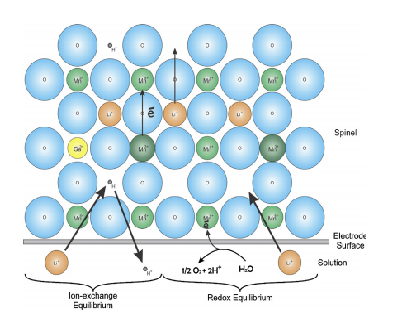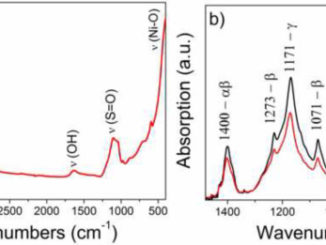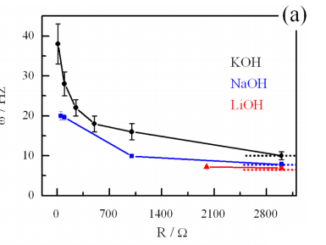
Study of the potentiometric properties of spinel-type manganese oxide doped with gallium and anions Ga0.02Mn1.98O3.98X0.02 (X = S2- and F-) as selective sensor for lithium ion
Abstract: This paper describes the development of a selective lithium ion sensor based on spinel-type manganese oxide doped with gallium and anions (Ga0.02Mn1.98O3.98X0.02, where X = S2- and F-). Investigation was made of the influence of cationic and/or anionic doping agents on the potentiometric response of the sensor. Experimental parameters evaluated included the effect of the lithium concentration on activation of the sensor by cyclic voltammetry, the pH of the electrolyte solution, and the selectivity towards Li+ compared to other alkali and alkaline-earth metal ions. There was an important influence of the unit cell size of the material on the linear range, detection limit, and selectivity of the sensor. Reduction in the size of the tunnel for insertion of the lithium in the porous structure of the oxide directly affected the potentiometric performance of the electrode. Sensor performance increased in the order: Ga0.02Mn1.98O4 > Ga0.02Mn1.98O3.98S0.02 > Ga0.02Mn1.98O3.98F0.02. The observed super-Nernstian response could be explained by a mixed potential arising from two equilibria (redox and ion exchange) in the spinel-type manganese oxide. Sensitivity and the influence of pH on the electrode response were directly related to the doping agents present in the oxide structure. (C) 2015 Elsevier Ltd. All rights reserved.
Author(s): David-Parra, DN; Bocchi, N; Teixeira, MFS
ELECTROCHIMICA ACTA
Volume: 174 Pages: 640-646 Published: AUG 20 2015
DOI: 10.1016/j.electacta.2015.05.177




